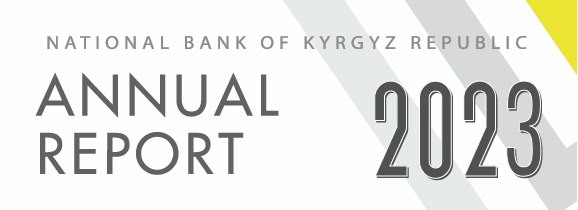Credits
(H1 2007)
In H1 2007, the credit portfolio of operating commercial banks increased by 62.5% and amounted to 18.4 Billion soms as of the late June. Without regard to the OJSC Ayil Bank the credit portfolio increased by 43.2% and amounted to 16.3 Billion soms.
The credit debt of the banking system increased more than 2 times in the part of credits in national currency (Without regard to the OJSC Ayil Bank the increase amounted to 38.5%) and by more than 45.2% in the part of credits in foreign currency . As a result of rapid growth of credits in national currency, their share increased by 7.4 pp up to 37.9%. Increase in the credit portfolio was marked for all operating commercial banks.
The rate of credits making up the portfolio of operating commercial banks in national currency decreased by 3.8 pp in the reporting period and amounted to 20.6% (Without regard to the OJSC Ayil Bank the value decreased by 0.9 pp, down to 23.5%). The rate of credits in foreign currency remained the same and amounted to 18.0% (Table 1 and Chart 1).
The growth of credits was registered for all branches of the real sector except communications. The share of agricultural credits increased (by 10.0 pp, up to 13.1%) in the industry structure of the credit portfolio; the shares of construction and mortgage credits increased as well, while the shares of other sectors decreased. Nevertheless, the credits to trade accounted for the major share (36.8%), same as before. These were followed by mortgage credits (14.9%), credits to industrial production (7.7%), to households (7.7%), and to construction (6.1%). The credits to transportation, communications, social services, procurement and processing had the smallest share, amounted to 2.4% in total; and the share of ‘other’ credits amounted to 11.4%.
In the period from January to June the share of long-term credits (with more than one year maturity) increased by 13.2 pp, up to 65.8%, compared to the beginning of the year; the maturity of credit portfolio increased by 3.0 pp, up to 24.6 months as of the late June. Qualitative characteristics of credits also improved: the share of overdue debt in total credit portfolio decreased from 2.9% to 1.9% as of the end of the period; and the share of deferred credits decreased from 5.8% to 3.6%.
Concentration index of the credit portfolio of operating commercial banks remained unchanged in H1 2007 at 0.09; this is equivalent to the market presence of 11 banks and indicates its low concentration. The level of branch concentration of the credit portfolios of banks also didn’t change and amounted to 0.46 as of the late June, which showed that the credit debt of major banks was divided approximately between two industries. Credits concentration by the industry was still high: the concentration index in 7 out of 11 banks amounted to 0.18.
Volume of the new credits issued over the 6 months of 2007 increased by 76.3% against the comparable period of the previous year and amounted to 12.6 Billion soms (Table 1 and Chart 2). Without regard to the OJSC Ayil Bank the flow of credits increased by 67.9% and amounted to 12.1 Billion soms. The volume of new credits in national currency increased by 89.3% and amounted to 4.2 Billion soms (without regard to the OJSC Ayil Bank the volume increased by 62.3%, up to 3.6 Billion soms), and the volume of credits in foreign currency increased by 70.4%, up to 8.4 Billion soms. The ratio of new credits to GDP increased by 11.3 pp, up to 25.6%, compared to H1 2006.
In H1 2007, there was an increase in the flow of new credits in all industries except construction and social services. The largest growth of credit volume was registered for agricultural credits (4.4 times) and mortgage (3.7 times); this impacted the shares of these industries in the portfolio, up to 7.2% and 12.9% correspondingly. Some increase in specific weight was also marked for new credits to households (up to 10.3%), while the shares of other industries decreased. However, credits to trade amounted to the largest share (44.3%) in the total flow of credits.
The flow of credits increased in all categories in terms of maturity, except the credits of up to 1 month. The most considerable growth was registered for the credits from 1 year to 3 years term (2.7 times) and for the credits of more than 3 years term (by 4.5 times) (Table 3). As a result, the average maturity of new credits increased by 8.3 months against the comparable period and amounted to 24.1 months.
The average interest rate for new credits in national currency decreased by 3.0 pp against the comparable period of the previous year and amounted to 22.6% on average for H1 2007. A decrease in the interest rates was marked for almost all branches of the real sector; nevertheless, a considerable decrease in the agricultural credit rates as well as an increase in their share in the total volume of credits had the most effect on the decrease in credit rate. In addition, structural changes in the flow of credits caused a decrease in the average interest rate. Credits to communication were issued for the lowest rates (15.0% on average for the reporting period), and the credits to social services were issued for the highest rates (29.1%).
In terms of maturity, the decrease in the average rates was observed for almost all credits except the rates for credits of more than 3 years (Chart 5).
Average level of interest rates for credits in national currency decreased by 1.1 pp in the banks and amounted to 23.6% in total for the period; the rates decreased in 12 banks and increased in 7 banks.
A real interest rate for credits in national currency decreased by 1.5 pp against the comparable period due to a decrease in nominal rate level and amounted to 17.1% on average for the reporting period. In addition, the decrease in growth rates of inflation (year-on-year) slightly smoothed this effect in H1 2007.
The average rate for credits in foreign currency increased by 1.8 pp against the comparable figure of H1 2006 and amounted to 18.4%. Increase in the rate was mainly due to increase in the cost of credits to industrial production, construction and ‘other’ credits as well as due to the structural changes in the flow of credits. Credits in foreign currency to construction were issued for the lowest rates (16.0% on average for the reporting period); credits in foreign currency to social services were issued for the highest rates (for 23.7%). In terms of maturity, a considerable increase was marked in the average rates of credits of up to 1 month term; the changes in average level of rate in other term categories were negligible (Chart 7). In terms of the banks, the average level of interest rates for credits in foreign currency decreased in 10 banks; the rates increased in 7 banks, and remained unchanged in two banks.

















